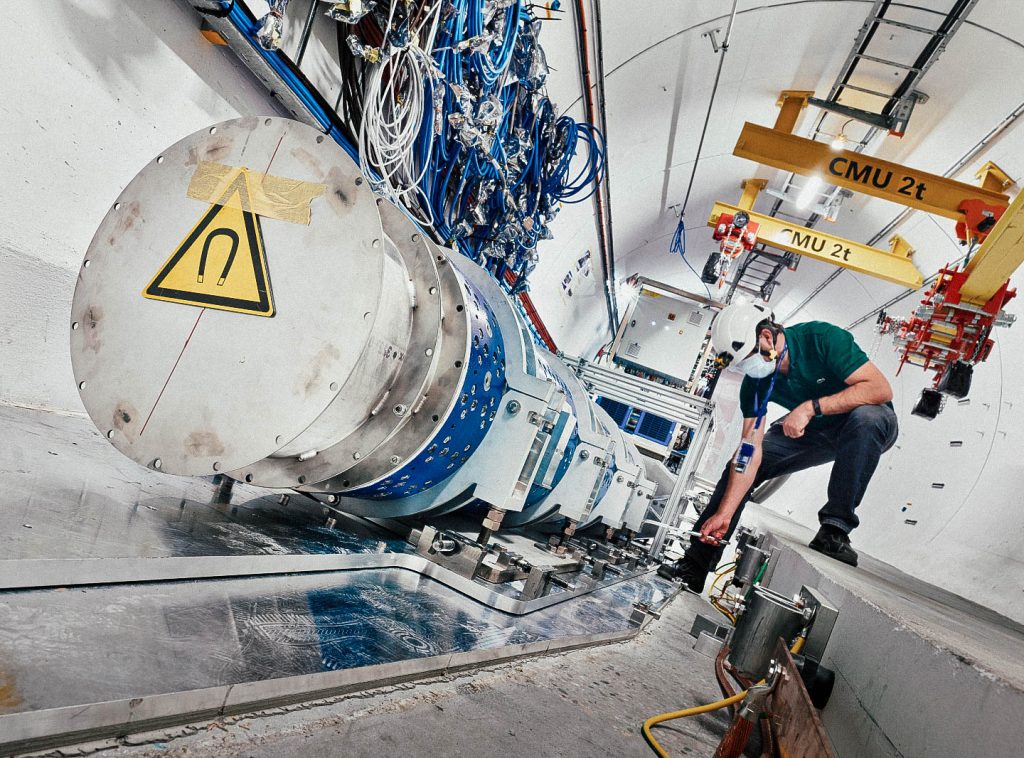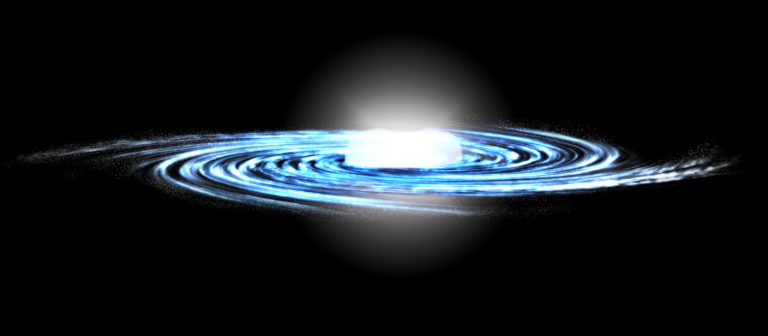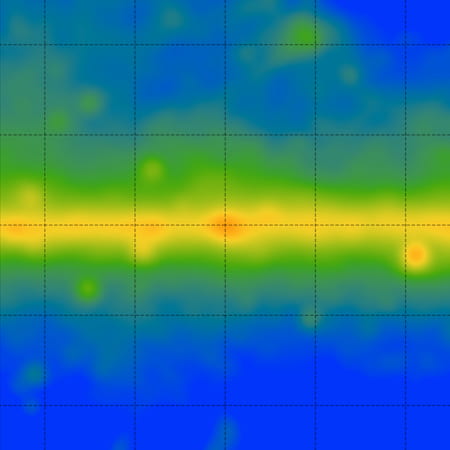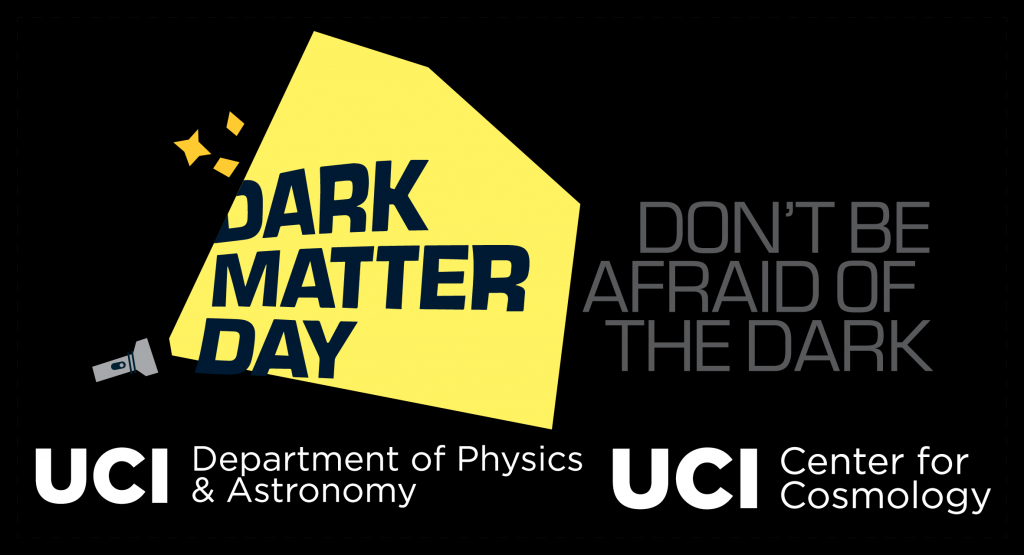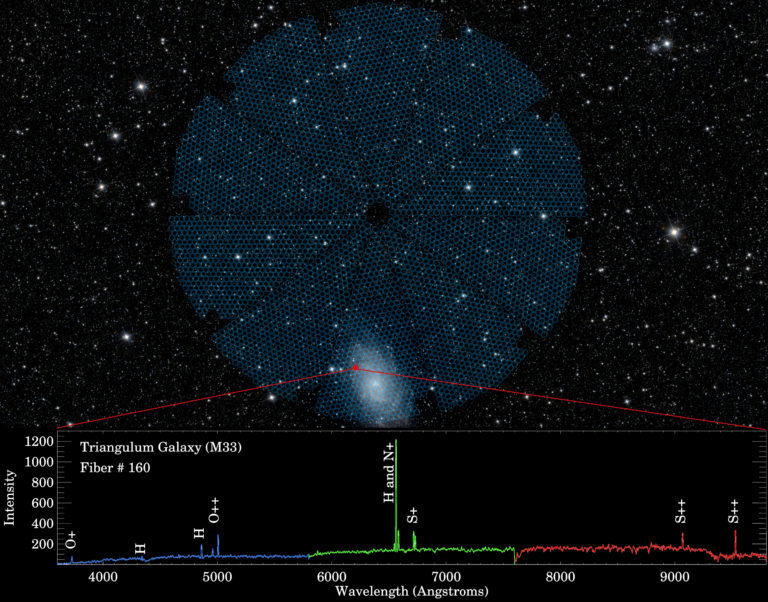The FASER particle detector, built in large part out of spare parts from other experiments at CERN like ATLAS, could fit comfortably inside a laundromat. Picture Credit: CERN
When Savannah Shively awoke on the morning of October 5th — it was a Monday — she knew that that day was going to be a bit different than the day before. Chains of days can pass without anything memorable happening, particularly when a pandemic makes “last month” and “last Wednesday” have almost the same meaning. But for Shively, October 5th stands out, because on that day she traveled almost 300 feet underground to a place where scientists try to find out, among other things, how the Universe was made.
When she awoke on that Monday, Shively, who’s a Ph.D. student in the UCI Department of Physics & Astronomy, awoke in an apartment in France. She’d just moved to the apartment from an old one; she moved not because she wanted to, but because her landlord at her old place told her they needed the home again because of a pandemic-related job loss. That first apartment, when she moved into it back in February after flying from the United States to France, didn’t have a washing machine, and for months Shively washed her clothes in the sink. She then got a washing machine, but then found out that she had to vacate, and, again, in her new place, she was without a washing machine.
Shively lost her washing machine, but she gained something else: Blancblanc. French for “Whitewhite,” Blancblanc‘s the name of a cat who would visit every day so Shively could pet him. Blancblanc would crawl onto Shively’s lap, lay on his back, look at Shively and wait for her to pet his white fur. “He’s helped with not making it feel so lonesome,” said Shively, who moved to France by herself on the eve of the pandemic. “At first I didn’t know his name, so I just called him the Snuggle Lord, because he always wants to be pet.”
The descent
But Blancblanc wasn’t with Shively on October 5th, the day she went underground. On that day, she walked for half an hour to a bus stop, and after a ten-minute ride she stood on the grounds of the Center for European Nuclear Research, which straddles the French-Swiss border, and which is where Shively’s been working all this year. She faced a non-descript building, and went inside and got into an elevator big enough to fit five people with those people staying about six feet away from one another. There were pandemic stickers on the ground that helped her and her group keep apart from one another.
Standing in formation, she began her descent.
“It shows you the meters on this little screen instead of floors because there’s really only the top floor and the bottom floor,” Shively said. “I was really quite excited, and I was trying very hard not to think about being 80 meters underground, which makes me considerably more nervous than being the same amount of space above ground.” It didn’t help that she had to wear a waist belt that held a gas mask, which would give her about 30 minutes of oxygen if something happened to the air supply.
The elevator stopped, and Shively and her group stepped into a concrete tube, one that looks like it could hold a subway train. But it holds something that moves a little faster: the Large Hadron Collider (LHC), which, as the largest machine in the world, smashes two beams of subatomic particles together after those beams zip around a nearly-17-mile-long tunnel at close to the speed of light. If you’d been there, you’d have seen a cylindrical machine sitting in front of you in the middle of the tube. Looking left and then right, you’d see that machine stretching away on either side, and then slowly disappearing around the bends of the tube.
But Shively wasn’t there for the LHC, at least not directly. Her stop was a short walk through the tube to a side-tunnel that, like a minor subway line, sits tangential to the main LHC tube. Back in 2017, that side-tunnel caught the eye of UCI theoretical particle physicist Jonathan Feng, who’s one of Shively’s doctoral advisors. It caught his eye because Feng is one of many physicists who want to find evidence for the existence of what’s become the grand prix of his field: dark matter. Nobody’s ever detected dark matter in a lab before, but physicists suspect that it comprises most of the mass of the cosmos. They suspect this because, without something like dark matter, there isn’t enough mass in the visible Universe — and, thus, not enough gravity — to explain the spin of things like entire galaxies.
Feng and his team think they might be able to detect dark matter with a machine that’s only a little longer than a row of washing machines. It’s a machine they’re calling FASER (it’s short for ForwArd Search ExpeRiment — but, really, the team just wanted to name it after the ray gun from “Star Trek”).
“We have three magnets, two of them are a meter long,” said Dave Casper, an experimental particle physicist in Physics & Astronomy who helped lead the effort to design FASER after Feng and his team proposed the idea, and who also advises Shively. “And the third is a meter-and-a-half, and they more or less line up in a row with small gaps between them. So, if you take three-and-a-half meters worth of magnets and a meter or two of detectors that go in between and at either end, it’s about roughly five meters long.”
So, about five washing machines.
By building FASER in the side-tunnel, Feng and his team hope to detect new particles that emerge when LHC collisions happen, but which, until now, passed unnoticed through other detectors’ blind spots. FASER, like an extra pair of eyes, will sit and watch those blind spots for renegade particles, some of which might come from dark matter.
“We might have been missing some integral sign all along,” said Hitoshi Murayama, a particle physicist at UC Berkeley who’s not involved with Feng’s work. “I think FASER’s a brilliant idea.”
A bird’s-eye view of the LHC tube where it intersects with the FASER tube. Credit: CERN Geographical Information System
New particles
As far as physicists know, there’re four forces that, like a washing machine’s buttons, make the Universe work the way it does. The worn labels on the buttons might read like this: The Strong Force, The Electroweak Force, The Electromagnetic Force and Gravity. If you put in four coins, you can select all four buttons, and you get the Super Wash cycle that spins the Universe we have into life, where gravity keeps you stuck on Earth without jettisoning you into space, and where the electromagnetic force makes light and gives us the colors of the world — and Blancblanc his name. Each of the forces is carried by a particle — like light’s photon, which carries the electromagnetic force — that interacts with the Universe in some way.
The strong force keeps the neutrons and protons that make the nuclei of atoms stick together, and “it’s important because otherwise the positive charges of the protons would push each other apart — but this is a force that sticks them together that’s even stronger,” said Tim Tait, who’s a theoretical particle physicist and who’s the chair of Physics & Astronomy. “That’s why we call it the strong force, and it’s necessary really for us to have any kind of element that’s heavier than hydrogen.” And the electroweak force, Tait explained, is responsible for radioactivity, “like when uranium decays, the process that powers nuclear reactors is through the weak force,” he said. Tait explained that without the electroweak force, there wouldn’t even be atomic nuclei. “In some ways it would be a dull Universe,” he said. “Instead of having all this structure, like us and the Earth and the trees and everything, we would actually just have this sort of cloud of protons and neutrons that wouldn’t do very much with each other.”
Definitely worth the extra coins for a Super Wash.
One day in 2017, Tait walked into Feng’s office and found him and three postdocs — Iftah Galon, Felix King and Sebastian Trojanowski — looking at LHC blueprints, trying to see if there was a place far enough away from its collisions, and where they could put FASER. What they spotted was the tunnel that Shively ventured to on October 5th, five meters from LHC — and, most importantly, in sight of LHC’s colliding beams.
Back then, Feng’s team didn’t yet have the money to build FASER, but in just over a year, he was able to secure enough funding from the Heising-Simons Foundation and the Simons Foundation — about 2 million dollars — along with support from CERN to make FASER a reality. That, and a donation of $25,000 from two UCI alumni, Nancy and Corwin Evans, gave Feng the funding he needed to send Shively to CERN to work on FASER for her doctoral research, where she’s helping to build the detector and run tests to make sure the data readings from FASER are accurate.
“It went from being an idea on the whiteboard in Jonathan’s office to being an approved and designed experiment in less than two years,” said Casper. “It took 20 years to build ATLAS — we’re really in a lot of ways breaking the mold.”
ATLAS is another particle detector at CERN — but, unlike FASER, it’s about six stories tall and cost many millions more to build. “I think it’s really cool, because FASER’s a really low-cost extension of the LHC,” said Rouven Essig, a particle physicist at Stony Brook University who’s not involved in FASER’s development.
It’s breaking molds, and FASER may also lift the veil on dark matter. FASER won’t detect dark matter itself, Casper explained, but it could detect something called a dark photon, a particle that, like the particles associated with the four fundamental forces of physics, would be how dark matter interacts with the rest of the stuff in the Universe.
“Nothing from standard physics should be able to produce the signal we’re looking for,” said Casper. “It would be an extremely, extremely important discovery. We’re gambling on something where, if we do win, it’ll be a big, big win.”
It’ll be big because, as Tait explained, the discovery of dark photons might herald the discovery of a new “fifth force,” one that, like the other four, could be a key part of the Universe’s machinery.
Fred Reines and the neutrino
FASER will also be on the lookout for a different kind of particle, one that, like dark matter, rarely interacts with anything: the neutrino, which, co-discovered by UCI physicist Fred Reines in 1956, is the most abundant particle in the Universe, and which is part of the process that make stars burn. FASER won’t be the first detector to spot a neutrino, but, Casper explained, neutrino observations are rare, and FASER stands to drastically increase the number of high energy neutrino observations, widening understanding of how the particle helps make the Universe spin the way it does.
“No neutrino has ever been detected at the LHC,” said Feng. “But FASER will detect about 10,000 in the coming three years, opening up a whole new area of research at the LHC.”
When Shively stood in the FASER tunnel on October 5th, it was empty. But just seeing the place where years of her and her team’s work have gone was, she said, “pretty dang cool.” In the next couple months, she and the rest of the UCI-led team will start installing FASER in the tunnel, and, come 2021 or 2022, once LHC starts running again, it’ll be ready for her and the team to insert an extra coin and see, when they punch the “Fifth Force” button, if something exists beyond the Super Wash cycle.
“There’s always some luck involved, and fortune,” said Essig of what the team might find. But when it comes to the first-of-its-kind detector, Essig added: “Some people make their luck.”
